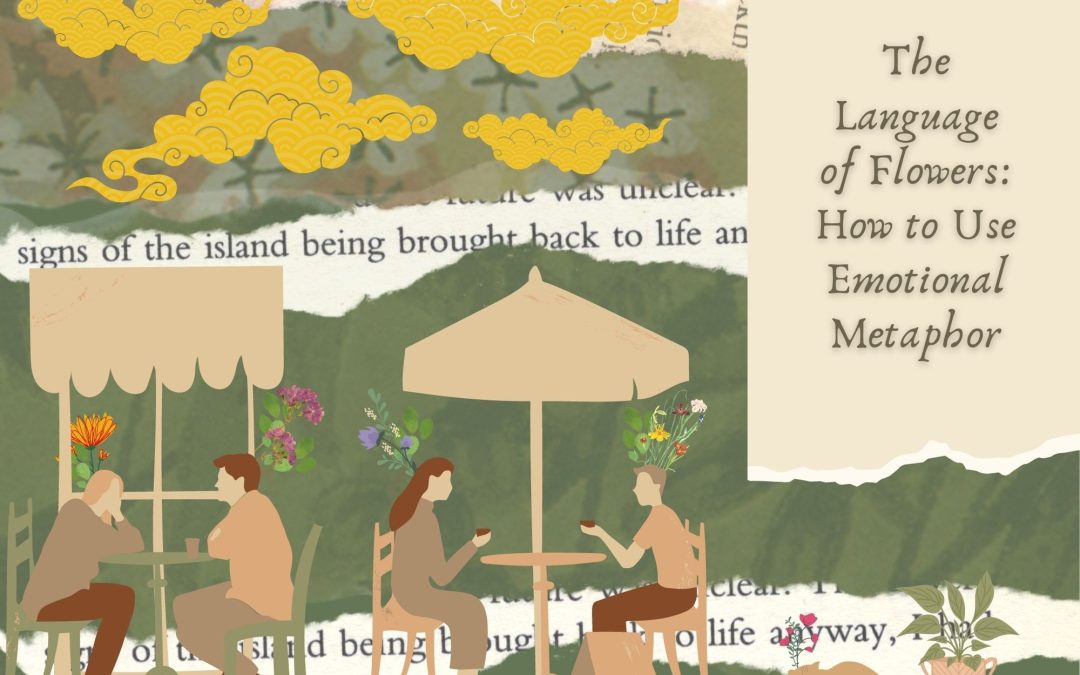“Yes, flowers have their language. Theirs is an oratory that speaks in perfumed silence, and there is tenderness, and passion, and even the light-heartedness of mirth, in the variegated beauty of their vocabulary. To the poetical mind, they are not mute to each other; to the pious, they are not mute to their Creator; and ours shall be the office, in this little volume to translate their pleasing language, and to show that no spoken word can approach to the delicacy of sentiment to be inferred from a flower seasonably offered…” —Kate Greenway, The Language of Flowers, 1884
Curious as to how flowers and metaphors could possibly mend together? Interested in a writing prompt pertaining to the subject? Well, dear reader, you’ve come to the right place. But, first and foremost, I must provide you with a little lesson, or perhaps, a refresher, to those of you who are familiar with the language of flowers and emotional metaphor.
The language of flowers, or floriography, for a more technical term, is the expression of messages and emotions through flowers. Actually quite comparable to this is metaphor, a figure of speech that, for rhetorical effect, directly refers to one thing by mentioning another. It may provide clarity or identify hidden similarities between two different ideas.
This idea of identifying hidden similarities between two different ideas is where the language of flowers and metaphor really combine, especially in terms of emotion. How does one label an emotion to a metaphor, and then on top of that, bring flowers into it? Well, dear reader, I think it would be best for us to take a trip.
Don’t worry, we will not be boarding The Magic School Bus and venturing into the human body. Rather, we’re going somewhere that, hopefully, holds much more appeal: a flower shop. Here, I’ll get the door for you, and you’d better grab a coat because the cooler where the flowers are kept is cold.
Upon entering the cooler, you come across a bucket of yellow carnations. Although beautiful, yellow carnations actually hold a darker meaning than one would expect. If you were to open your now accessible copy of Greenway’s, The Language of Flowers, you would find that the real meaning behind a yellow carnation is actually disdain and rejection. How can you use this flower as an emotional metaphor in your writing? Let’s come up with an idea for a song using yellow carnations as an example. Instead of naming your song “Disdain and Rejection,” call it “Yellow Carnation.” Imagine hearing a song of that name over the radio and expecting some lovely song about spring and joy and flowers to come on and instead emerges a fervent, grave song about a rejected lover filled with disdain for another. Emotional metaphors in relation to the language of flowers can work out beautifully in this way, and pique the interest of both readers and listeners. If I heard “Yellow Carnation,” on the radio and then the darker lyrics that followed, I can definitely say I’d be shocked and interested in the meaning behind the title.
Now that you’ve been introduced to and shown an example of how to merge the language of flowers with emotional metaphor, I encourage you to keep walking through the cooler and find more flowers to identify the meanings behind and write about. Or, even better yet, if you’d like to expand your research beyond the language of flowers, bring emotional metaphor with you.
Perhaps you have had an awful relationship with your father (in which case you’re not alone) and he is a huge fan of motorcycles. Are there specific meanings related to certain motorcycle parts from which you could craft a piece of art from? Or, even better yet, create your own “Language of Motorcycles” novel!
With this final note, I extend the language of flowers to you, dear reader, in the hopes that it can help you, too.
Meet the blogger:

TRISTA KNEBEL is currently a junior at Hamline University pursuing her BFA in creative writing and BA in music. She loves murder mysteries and rain and when she’s not in class she is working at a local florist in St. Paul, convincing herself not to bring home a new plant.


